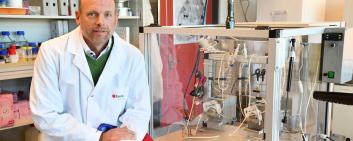Swiss researchers are currently developing an artificial heart as part of the Zurich Heart project of the research alliance University Medicine Zurich. An artificial heart would be a lifesaver for people with cardiac failure, who currently have to hope for a suitable donor organ while awaiting a transplant.
To ensure that the artificial heart is tolerated by the body, it should be enveloped and coated in human tissue, “much like a coat of invisibility”, writes the Federal Laboratories for Materials Science and Technology (Empa). Until now, however, culturing multi-layered functional tissue has been a major challenge.
“To be sure, it is possible to create three-dimensional polymer structures that closely resemble human tissue by means of so-called electrospinning, for example,” said Lukas Weidenbacher, a researcher at Empa, which is a partner in the Zurich Heart project. But this process requires harmful solvents that damage the sensitive cells.
Researchers at Empa’s Laboratory for Biomimetic Membranes and Textiles in St.Gallen have now succeeded in packing the cells in protective capsules made of gelatine, which contain one to two of the patient’s cells each. A special spraying process – called electrospraying – makes it possible to inject the capsules into the pores of a spun scaffold. The capsules protect the cells from the spraying, and once the cells have settled, the gelatinous capsules dissolve.
The aim is to end up with a structure that resembles natural muscle tissue as closely as possible.







